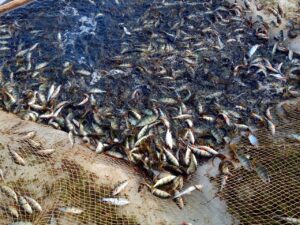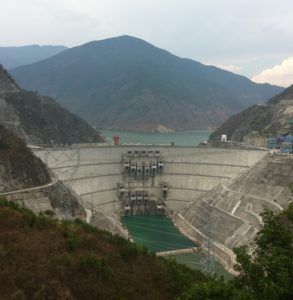Featured News
Tensions in the South China Sea continue despite global pandemic

As the world continues to fight the spread of the coronavirus, both Washington and Beijing continue to signal their presence in the South China Sea. China has reportedly taken advantage of this pandemic by continuing with provocative acts, such as expanding natural gas production in the area and constructing additional research facilities on the Spratly Islands. The Spratlys occupy a strategic location in the South China Sea and contain natural gas and oil despots, as well as extensive fishing areas.
On March 26th, China’s Ministry of Natural Resources announced a daily record for natural gas extraction in the South China Sea. Earlier this month, a Chinese surveillance vessel sank a Vietnamese fishing boat in waters claimed by both China and Vietnam. The U.S. criticized this act but China pushed back, stating that the U.S. is negating its legitimate claims in the South China Sea.
While China’s presence in the South China Sea remains visible, some analysts believe the U.S. Navy’s deployment capability in the Asia Pacific region has been impacted by the pandemic. Increasing numbers of coronavirus cases on U.S. Navy ships has led the Pentagon to curtail troop movements to reduce the spread of the virus. China’s neighbors who also claim the islands—Vietnam, Philippines, and Malaysia—are also busy enforcing quarantine measures. As coronavirus continues to affect tensions, this space needs to be watched.
Coral Bleaching in the Great Barrier Reef
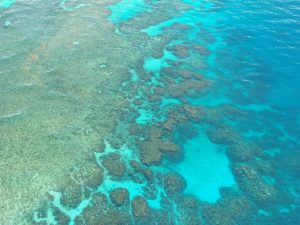
Australia’s Great Barrier Reef, the largest reef in the world, is suffering another significant bleaching event. This year’s bleaching is turning out to be one of the worst on record and we thought we already hit that mark in 2019. Spanning 1,250 miles from the Northern Torres Strait to the Southern Bundaberg marine park, this event has significantly affected the southern third of the Reef for the first time. This is extremely concerning as it signals that the warming of the southern third of the Reef, with relatively cooler waters, might be accelerating. Bleaching events are also occurring much more frequently than before, with this event the third in the past five years. According to Nature, prior to 2016 bleaching events occurred only in 1998 and 2002. This increased frequency of bleaching was not expected to occur until the middle of the century.
Lightly bleached corals may still recover when surrounding water cools down, but if this accelerated warming trend continues, which most scientists think it will, the Great Barrier Reef may be unrecognizable in 50 years. The loss of the Great Barrier Reef would be devastating to Australia and global biodiversity. The Reef protects Australia’s coastline, purifies water, contains over 600 species of coral, and provides essential habitat to over 1,600 species of fish, along with sharks, rays, whales, and dolphins. It also generates over $6 billion for the Australian economy each year. Without this valuable ecosystem, Australia would stand to lose a vital component of its economic and food security.
Nepal’s Climate Change Migrants
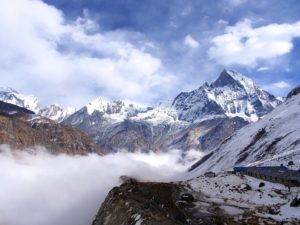
The consequences of climate change are being felt in the Himalayas. Glacial melt has accelerated, agricultural and grazing land is becoming become barren, and rising temperatures could spread vector-borne diseases like malaria and dengue, as mosquitoes start to appear in the highlands.
According to the Hindu Kush Himalaya Assessment, even if the most ambitious climate targets are met, one third of the Himalayan glaciers would still melt by the end of the century. This proportion rises to two thirds if we continue business as usual. Changing precipitation patterns have also affected the country’s water resources. As water supplies dwindle, the impact will be devastating on Nepal’s 19.6 million agricultural workers. Cumulative losses in agriculture will lower GDP growth by 17 percent. Even with targeted resilience measures, many of Nepal’s residents will struggle to adapt to this fast-changing climate.
The changing climate has also contributed to migration, displacing thousands of climate migrants from Nepal’s Himalayas down to lower altitudes. This is part of a wider trend, with experts predicting that by the end of the century the number of global climate migrants may reach one billion.
IN CASE YOU MISSED IT
New UN Report on Conflict Prevention in an era of Climate Change

Today’s conflicts are proving to be more deadly and more difficult to resolve than ever before. There is also a growing recognition of the role of climate change in exacerbating conflict risks. Climate-related changes to water resources, sea levels, and migration patterns are already impacting the stability of many states and will require large-scale adaptation and mitigation.
A new report by the UN University outlines how the UN and its partners are developing climate-sensitive conflict prevention approaches and how climate-security linkages can be better integrated into the UN system.
Wildfires in Chiang Mai, Thailand worsened by severe drought
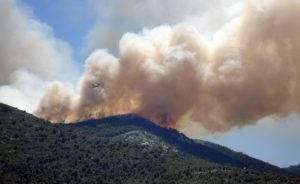
Thailand currently faces a two pronged threat: Covid-19 and rampant wildfires. In Chiang Mai, Thailand, wildfires which likely began due to slash and burn agriculture have been prolonged due to drought and lack of rainfall. As the fires continue to spread, there are huge implications for wildlife and air quality, with local readings for the latter reaching 392 on the Air Quality Index. AQI levels above 301 are classified as hazardous to human health. The fires have now burned over 300 acres and killed 5 volunteer firefighters so far.
Sea-Air-Space 2020 Symposium leads off with panel on Illegal, Unreported, and Unregulated (IUU) fishing
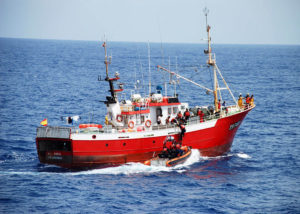
On the opening day of the Sea-Air-Space 2020 Symposium, Rear Adm. Doug Fears, the U.S. Coast Guard’s Assistant Commandant for Response Policy, and Dave Hogan, Acting Director of the U.S. Department of State’s Office of Marine Conservation, explored the threat that IUU fishing poses to both sovereign and national security. RADM Fears noted that as IUU fishing vessels violate the principle of sovereignty by fishing in another country’s exclusive economic zone, the risk of instability and conflict increases. This interplay between IUU fishing and maritime instability can be seen across the globe.
Examples include the South China Sea and the Gulf of Guinea in West Africa. U.S. Coast Guard presence and capacity building are effective measures to counter IUU fishing. However, more needs to be done to effectively combat the widespread cases of IUU fishing.
Five vessels from the Philippines and Vietnam caught fishing illegally in Indonesian waters
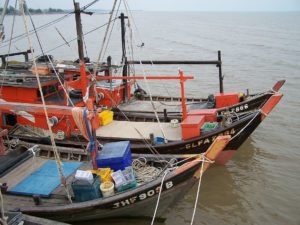
Indonesian maritime patrols seized three Filipino and two Vietnamese flagged vessels in the North Natuna Sea and Sulawesi Sea on April 11th. A total of 34 Filipino crewmen and 6 Vietnamese crewmen were apprehended. This follows last month’s interception of two illegal Vietnamese vessels by Indonesia in the same North Natuna Sea. Indonesia, the world’s biggest archipelago nation, has been trying to curtail IUU fishing in its territory, stating it costs Southeast Asia’s economy billions of dollars annually. However, the Natuna Islands and its surrounding waters are also claimed by China.


